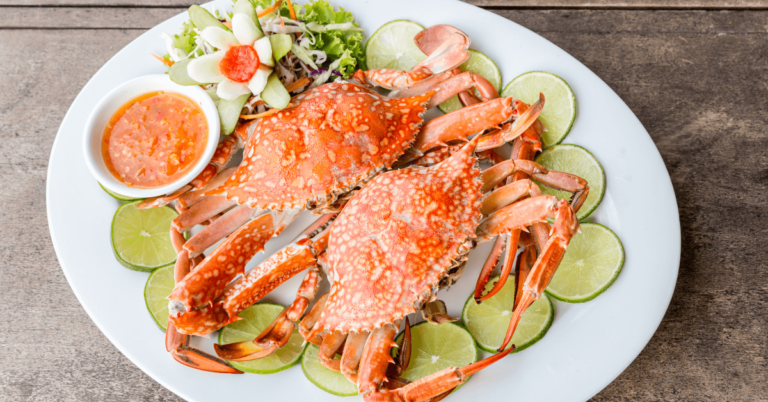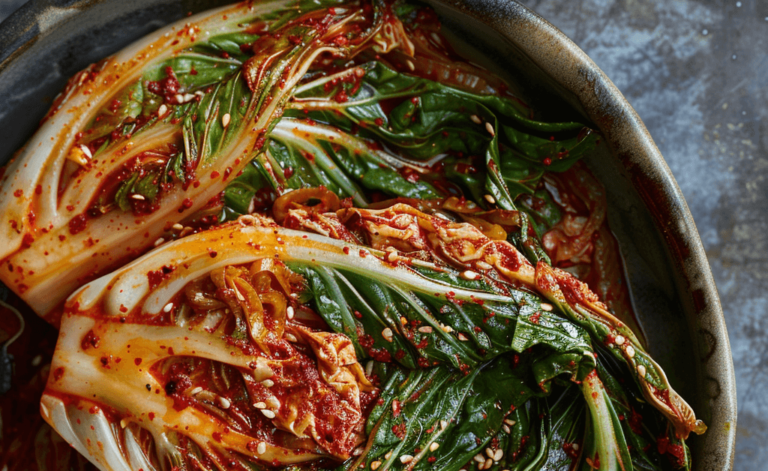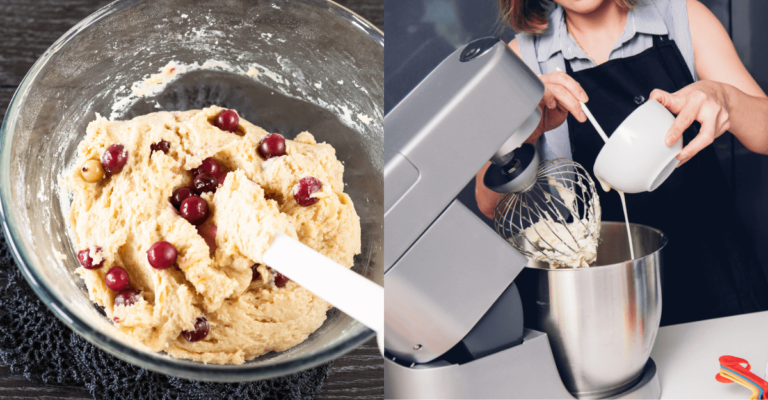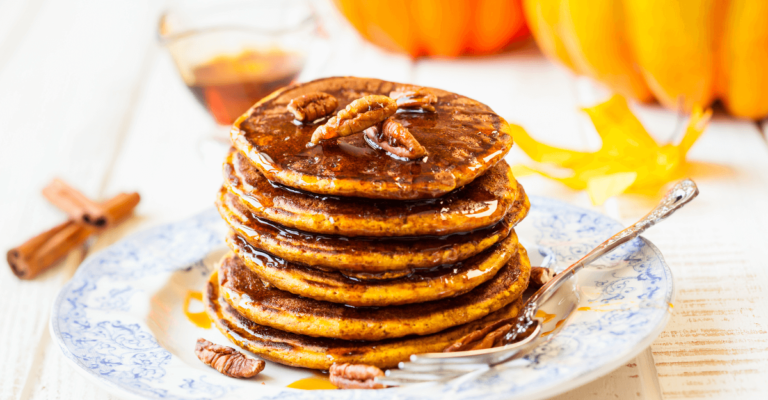How to Roast Frozen Vegetables: A Comprehensive Guide
Part 1: Introduction to Roasting Frozen Vegetables
Roasting frozen vegetables is a culinary secret that’s both convenient and healthy. But how do you transform these icy veggies into a delicious, crispy side dish? Let’s dive in!
Introduction to the Topic
Roasting is a fantastic way to bring out vegetables’ natural sweetness and flavor. When it comes to frozen vegetables, many wonder if they can achieve the same delicious results as fresh produce. The answer is a resounding yes! You can turn frozen veggies into a delectable, healthy addition to any meal with the right techniques.
Benefits of Using Frozen Vegetables
Why opt for frozen vegetables? First off, they’re incredibly convenient. Picked at peak ripeness and flash-frozen, these veggies retain most of their nutritional value. They’re a time-saver too, as they’re already chopped and ready to cook. Plus, they’re often more affordable than their fresh counterparts and last longer in your freezer, reducing food waste.
Overview of the Roasting Process
Roasting frozen vegetables is straightforward but requires some know-how. The key is to roast at a high temperature, which helps evaporate the water quickly, preventing the veggies from becoming soggy. You’ll want to spread them in a single layer on a baking sheet, ensuring they’re not overcrowded, to allow for even cooking and browning. Seasoning is also crucial – a dash of olive oil, salt, pepper, and your favorite herbs can elevate the flavors beautifully.
In conclusion, roasting frozen vegetables is a simple, nutritious, and delicious way to enjoy your favorite veggies. Stay tuned for the next part, where we’ll delve into selecting and preparing the right vegetables for roasting. Remember, with the right approach, you can turn a bag of frozen veggies into a gourmet side dish!
In the next section, we’ll explore how to select and prepare your frozen vegetables for roasting, ensuring you get the most flavor and nutrition out of your dish. Stay tuned for more tips and tricks in Part 2!
Part 2: Preparing for Roasting
Now that we’ve covered the basics let’s move on to selecting and preparing your frozen vegetables for roasting. This step is crucial for achieving that perfect, crispy finish.
Selecting the Right Vegetables
Not all frozen vegetables are created equal when it comes to roasting. Some, like broccoli, cauliflower, and Brussels sprouts, roast beautifully, developing a delicious, caramelized exterior. Others, such as leafy greens, might not fare as well due to their high moisture content. Opt for veggies that are cut into uniform pieces for even cooking.
Preparation of Frozen Vegetables Before Roasting
Here’s a key tip: do not thaw your vegetables before roasting. Thawing can make them soggy. Instead, toss them directly from the freezer onto a baking sheet. But wait, there’s more! To ensure even roasting, give them a good shake to spread them out. This prevents them from steaming in their moisture.
Essential Tools and Equipment
A few kitchen tools can make a big difference in the outcome of your roasted vegetables. A large, rimmed baking sheet is a must-have, providing ample space for the veggies to roast evenly. Parchment paper or a silicone baking mat can be used for easier cleanup, but it’s not essential. Lastly, a good spatula or pair of tongs will come in handy for turning the vegetables midway through roasting.
In summary, selecting the right frozen vegetables and preparing them correctly is crucial for achieving that perfect roast. Remember, don’t thaw, spread them out, and use the right tools. In the next part, we’ll dive into the roasting techniques, including the ideal temperatures and timings for different vegetables. Stay tuned for these golden nuggets of information in Part 3!
Part 3: Roasting Techniques
Mastering the art of roasting frozen vegetables is all about technique. Let’s break down the steps and explore how to get that perfect, crispy texture every time.
Step-by-Step Roasting Guide Roasting Frozen Vegetables
- Preheat Your Oven: Preheat your oven to a high temperature, typically around 425°F (220°C). This high heat is crucial for evaporating moisture quickly and getting those veggies nice and crispy.
- Season Your Vegetables: While your oven is heating, toss your frozen veggies in olive oil and your choice of seasonings. Think garlic powder, paprika, or Italian herbs for a flavor boost.
- Spread Them Out: Arrange the vegetables in a single layer on your baking sheet. Ensure they’re not overcrowded, as this can lead to steaming rather than roasting.
- Roast and Stir: Place the baking sheet in the oven and roast for about 20-30 minutes, depending on the vegetable. Halfway through, please stir or flip them for even browning.
Temperature and Timing for Different Vegetables
Different vegetables require slightly different approaches:
- Broccoli and Cauliflower: About 20-25 minutes. They should be tender and caramelized at the edges.
- Carrots and Squash: These might take a bit longer, around 25-30 minutes, to get tender and slightly browned.
- Brussels Sprouts: Cut in half if they’re large, and roast for 20-25 minutes.
Tips for Achieving Perfectly Roasted Vegetables
- Don’t Thaw: As mentioned earlier, cook them straight from frozen to avoid sogginess.
- High Heat: Stick to high temperatures to ensure proper caramelization.
- Spacing: Give your veggies enough room on the baking sheet. Crowding can lead to steaming.
- Seasoning: Don’t be shy with seasonings. Frozen veggies can handle bold flavors.
In conclusion, you can turn frozen vegetables into a roasted delight with the right temperature, timing, and technique. In the next part, we’ll explore how to enhance the flavors of your roasted vegetables with seasonings, marinades, and more. Stay tuned for Part 4, where we’ll add some extra zing to your veggies!
Part 4: Flavor Enhancements Roasting Frozen Vegetables
Roasted vegetables are delicious, but the right seasonings and marinades can elevate them to a new level. Let’s explore how to add extra flavor to your roasted frozen veggies.
Seasoning and Marinades for Roasted Vegetables
- Herbs and Spices: Dried herbs like rosemary, thyme, or oregano can add a wonderful aroma and flavor. For a bit of heat, sprinkle some chili flakes.
- Marinades: Before roasting, you can marinate your veggies in olive oil, balsamic vinegar, garlic, and herbs. Even a quick 15-minute marinade can infuse them with extra flavor.
- Cheese: A sprinkle of grated Parmesan or crumbled feta cheese in the last few minutes of roasting can add a savory touch.
Combining Vegetables for Flavorful Mixes
Mixing different types of vegetables can create a delightful blend of flavors and textures. Try combinations like broccoli and cauliflower or Brussels sprouts with carrots. The key is to choose vegetables that have similar roasting times.
Healthy Toppings and Dressings
- Toppings: After roasting, top your veggies with toasted nuts or seeds for a crunchy texture. A squeeze of fresh lemon juice can also add a refreshing zing.
- Dressings: Drizzle a light dressing over your roasted vegetables. A simple vinaigrette or a tahini-based dressing can be a great choice.
The right seasonings, marinades, and toppings can transform your roasted frozen vegetables into a gourmet side dish. Experiment with different combinations to find your favorite flavors. In the next part, we’ll discuss how to serve and store your roasted vegetables, ensuring they remain delicious after the meal. Stay tuned for Part 5, where we’ll wrap up our roasted vegetable journey!
Part 5: Serving and Storage Roasting Frozen Vegetables
After mastering the roasting process and flavor enhancements, knowing the best ways to serve and store your roasted vegetables is important. This ensures they remain as delicious as when they first came out of the oven.
Creative Serving Ideas
- As a Side Dish, Serve your roasted veggies alongside your main course. They pair wonderfully with proteins like grilled chicken, fish, or tofu.
- In Salads: Let the vegetables cool down and toss them into a healthy salad for a hearty meal.
- In Grain Bowls: Combine them with quinoa, rice, or any whole grain for a nutritious and filling bowl.
- As a Snack: Believe it or not, roasted veggies make a great snack. Try dipping them in hummus or a yogurt-based dip.
Storing and Reheating Roasted Vegetables
- Storing: If you have leftovers, store them in an airtight container in the refrigerator. They’ll last for about 3-4 days.
- Reheating: To retain their texture, reheat the vegetables in the oven or skillet over medium heat. Avoid microwaving, as it can make them soggy.
Pairing with Main Courses
Roasted vegetables are incredibly versatile and can complement various main courses. For a comforting meal, pair them with pasta or a casserole. They go well with grilled fish or a simple omelet for something lighter.
In conclusion, correctly serving and storing your roasted vegetables is key to enjoying their flavors to the fullest. With these tips, you can turn any meal into a delightful and healthy experience.
Stay tuned for our final part, where we’ll summarize the key points and wrap up our comprehensive guide on roasting frozen vegetables. You won’t want to miss these final insights in Part 6!
Part 6: FAQs Roasting Frozen Vegetables
In this final section, let’s address frequently asked questions about roasting frozen vegetables. These insights aim to clear up any doubts and ensure you’re fully equipped to make the most of your roasted veggies.
Common Questions and Answers
- Do I Need to Thaw Frozen Vegetables Before Roasting?
-
- No, you don’t need to thaw them. Roasting them directly from frozen helps to maintain a better texture.
- What’s the Best Temperature for Roasting Frozen Vegetables?
-
- A high temperature, around 425°F (220°C), is ideal. It helps evaporate the moisture quickly, resulting in a crispy texture.
- How Long Should I Roast Frozen Vegetables?
-
- It typically takes about 20-30 minutes, depending on the type of vegetable and your oven. Keep an eye on them and stir halfway through.
- Can I Roast Different Vegetables Together?
-
- Yes, but choose vegetables with similar cooking times. For example, broccoli and cauliflower pair well together.
- How Can I Make My Roasted Vegetables Crispier?
-
- Ensure your oven is fully preheated before roasting, don’t overcrowd the pan, and consider flipping them halfway through the cooking time.
Conclusion Roasting Frozen Vegetables
Roasting frozen vegetables is a simple, nutritious, and versatile cooking method. Following the tips and techniques outlined in this guide, you can transform a simple bag of frozen veggies into a delicious, gourmet side dish. Remember, the key to perfect roasted vegetables is the high cooking temperature, proper seasoning, and avoiding overcrowding on the baking sheet.
We hope this comprehensive guide has inspired you to experiment with roasting frozen vegetables and incorporate them into your meals. It is a time-saving cooking method and brings out the best in your vegetables, making them a delightful addition to any dish.
Part 7: Wrapping Up – Embracing Easy, Healthy Cooking
Let’s quickly recap the essentials of roasting frozen vegetables and reflect on how this simple cooking method can be a game-changer in your kitchen.
Quick Recap of Roasting Frozen Vegetables
- No Thawing Needed: Roast straight from the freezer at a high heat (around 425°F or 220°C) for 20-30 minutes.
- The flavor is Key: Experiment with herbs, spices, and marinades to elevate your veggies.
- Versatile Serving Options: Enjoy as a side, in salads, or as a snack. Store leftovers properly for future meals.
- Nutritional Boost: Frozen vegetables retain most nutrients, making them a healthy choice.
The Benefits of This Simple Method
Roasting frozen vegetables is not just about convenience; it’s a step towards healthier eating. It’s perfect for busy lifestyles, requiring minimal prep and cooking time. Plus, it’s a sustainable choice. Frozen veggies are often more affordable and last longer, helping to reduce food waste.
Final Thoughts
We hope this guide inspires you to include more roasted frozen vegetables. It’s an easy, tasty way to boost your nutrient intake and enjoy a variety of veggies. So, give it a try and savor the delicious, healthy results!







